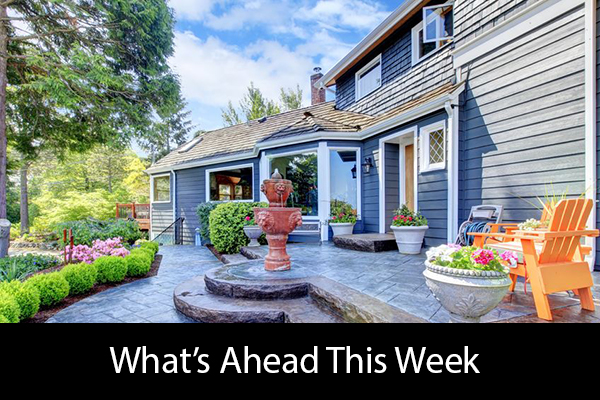 To refinance or not to refinance, that is the question. How do you know when it is an appropriate time to refinance? Many factors influence this decision, besides just the cost of the mortgage loan. Here is a checklist to follow when considering a refinancing opportunity.
To refinance or not to refinance, that is the question. How do you know when it is an appropriate time to refinance? Many factors influence this decision, besides just the cost of the mortgage loan. Here is a checklist to follow when considering a refinancing opportunity.
Check Your Credit Score
Refinancing is similar to getting the original home loan. The lenders will run a credit check and verify your current income. Your total debt level and your credit history are both important. If you have some “dings” on your credit record, you may be better off staying with the existing mortgage rather than attempting refinancing.
The opposite is also true. If your credit score has significantly improved since the time when you took out a mortgage, you may benefit from refinancing.
Be aware that every time you ask a lender for loan approval, and the lender runs a credit check, the credit inquiry will lower your credit score. It is highly advisable to check your credit history first before applying for any mortgage financing. If there is anything that is not correct in your credit file, then dispute the bad information to improve your credit score.
To get the best rates on mortgage financing, aim for a credit score of above 740, with a debt-to-income ratio of below 75%. The rule of thumb is that for every 20 points that your credit score goes up you will benefit from lower rates.
Private Mortgage Insurance
Another consideration on the checklist is whether you pay private mortgage insurance (PMI). PMI is usually a requirement for a low down payment loan. If the equity value that you have in the home increased significantly since the time you bought it, the PMI may no longer be necessary. Sometimes a lender will accept a new appraisal of the home and recalculate the PMI requirements. Ask your lender if they allow this. If they do, you may be able to get rid of the PMI without refinancing.
If a lender will not remove the PMI requirement, and the equity value of the home is substantially higher, then refinancing may be beneficial, if the new loan does not require PMI.
Closing Costs
Covering the closing costs is a mathematical calculation. The amount saved on the monthly mortgage payment needs to be larger than the closing costs on a refinancing loan. The amount of savings depends on how long you plan to own the property. For example, if the closing costs are $3,600 and your monthly saving on the mortgage is $200, the break-even, where you save more than the closing costs, is 18 months later. You should plan to own the property for at least 18 months for this refinance to make financial sense.
Cash Out
Sometimes the benefits of refinancing also include the possibility of taking cash out from the refinancing loan to use for other purposes. If this is the case, consider the savings on the cost of those funds if borrowed elsewhere.
Summary
Those are the things to think about when considering refinancing. Work with a qualified real mortgage broker to get advice if you are not certain about the best thing to do.
If you are in the market for a new home or interested in listing your current property, be sure to contact your trusted real estate professional.
 Under the Jumpstart Our Business Startups (JOBS) Act, which was signed into law by President Obama on April 5, 2012, the Securities Exchange Commission (SEC) relaxed the rules about advertising investments. This allowed the trend of crowdfunding to expand dramatically giving real estate investors more opportunities for pooled-funds investing.
Under the Jumpstart Our Business Startups (JOBS) Act, which was signed into law by President Obama on April 5, 2012, the Securities Exchange Commission (SEC) relaxed the rules about advertising investments. This allowed the trend of crowdfunding to expand dramatically giving real estate investors more opportunities for pooled-funds investing. Last week’s scheduled economic reports included readings on inflation and consumer sentiment. Weekly readings on mortgage rates and new jobless claims were also released.
Last week’s scheduled economic reports included readings on inflation and consumer sentiment. Weekly readings on mortgage rates and new jobless claims were also released. In the overwhelming majority of the 50 largest cities across the U.S., monthly rent is more than the mortgage payment for single-family homes. In several cases, much more.
In the overwhelming majority of the 50 largest cities across the U.S., monthly rent is more than the mortgage payment for single-family homes. In several cases, much more.  Recent advancements in technology continue to disrupt the real estate market. This includes the use of “Big Data” for data mining, artificial intelligence combined with machine learning, augmented and virtual reality, use of drones, blockchain technology, and the ongoing deployment of 5G.
Recent advancements in technology continue to disrupt the real estate market. This includes the use of “Big Data” for data mining, artificial intelligence combined with machine learning, augmented and virtual reality, use of drones, blockchain technology, and the ongoing deployment of 5G. There are many individuals who end up on a fixed income once they reach a certain age; however, their expenses aren’t always fixed. Sometimes, there is a large medical expense. In other cases, someone might need money for a new car or a home repair. In the event that someone needs cash quickly, one option is called a reverse mortgage.
There are many individuals who end up on a fixed income once they reach a certain age; however, their expenses aren’t always fixed. Sometimes, there is a large medical expense. In other cases, someone might need money for a new car or a home repair. In the event that someone needs cash quickly, one option is called a reverse mortgage.